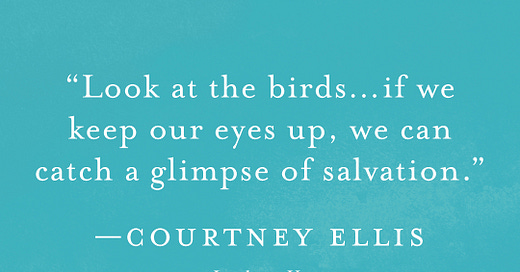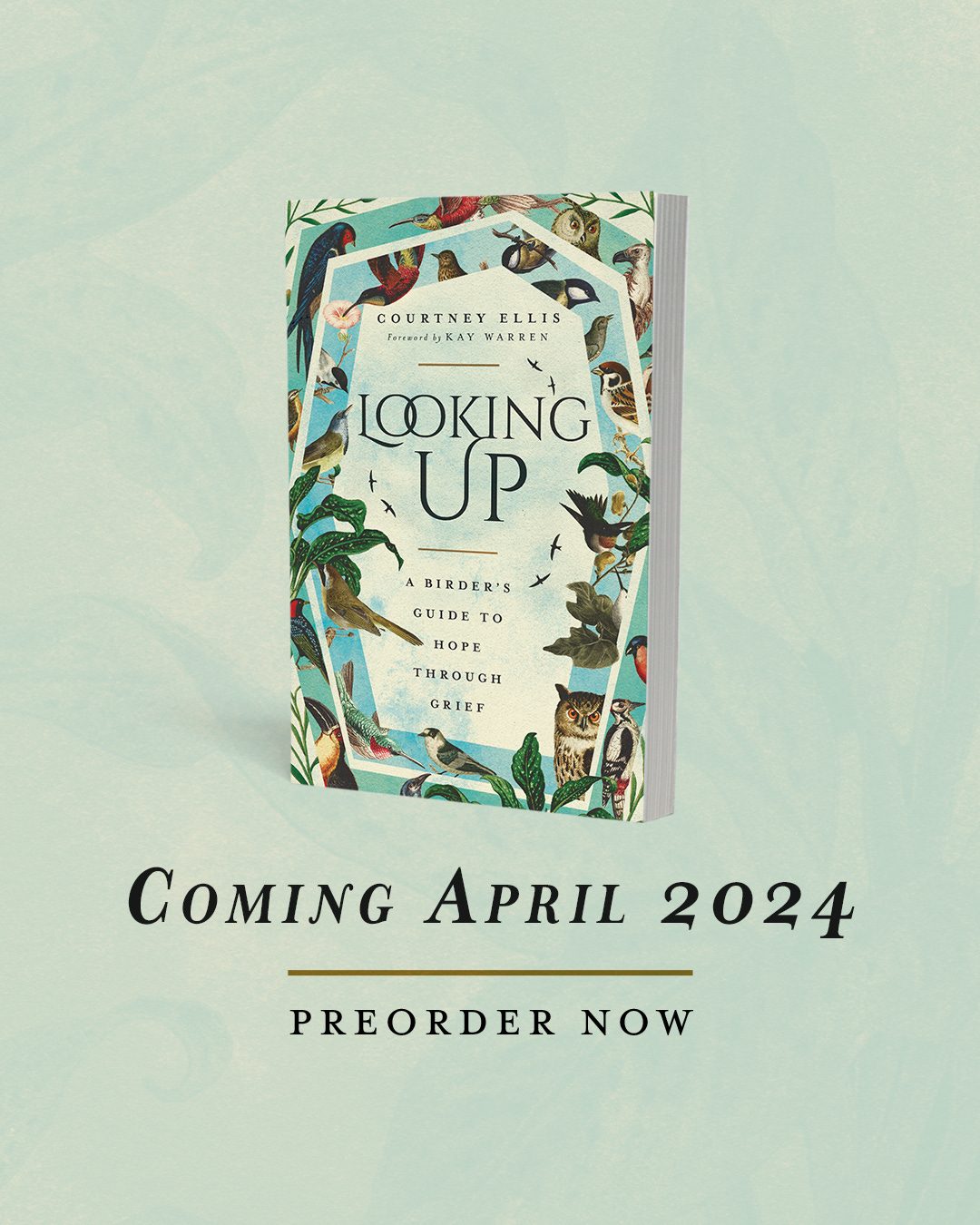Welcome to the Walking Diaries where each month a friend of mine will share a story/reflection/poem/photo essay from a walk they took. With each diary shared, I hope you’ll be encouraged to lace up your shoes and put one foot in front of the other. New to the series? Start here for the introduction or this walk in Bethlehem.
Today’s walking diary is from pastor, writer, birder, and mother Courtney Ellis. I first became acquainted with Courtney through her book Almost Holy Mama: Life-Giving Spiritual Practices for Weary Parents. Her book had me laughing out loud and desiring to deepen my spiritual life. Since then Courtney has taken up birding and podcasting where she continues to inspire me to look for hope and pay attention to the beauty before me. Whether you’re a birder or not, I pray her walk will inspire you to get outside and look up.
You know you’ve gotten really into birding when you sign up for rare bird alerts. Every region has its usual species—I’m coastal, so a brown pelican is no big deal—but then there are vagrant birds that meander into an area by surprise. When a male Vermillion Flycatcher showed up at the San Joaquin Marsh, the message boards went bananas.
Rare birds are exciting in and of themselves, of course. It’s a gift to witness a species that usually lives hundreds—or even thousands—of miles away, often for the first time. I’ve gotten in my car for a grey Townsend’s Solitaire, a muted Clark’s Nutcracker, and half a dozen varietals of sparrows that all basically look the same.
But then there are the high-profile rare birds. The fancy or colorful or whimsical ones. Even my friend Frank’s non-birding wife went with him to his local Pennsylvania birding patch after she learned a flamingo had been blown in by Hurricane Idalia. When a Snowy Owl showed up in Cypress, California, hundreds gathered to view it.
“I teared up,” my friend Nicholas wrote. He’s an adult man. A horror novelist. Guy doesn’t, you know, tear up.
Male Vermillion Flycatchers are gorgeous bright red-and-black birds no bigger than a shampoo bottle. Flycatchers in general are fun to watch—they flick their tails up and down, they sit on exposed perches, they dart back and forth to catch insects in flight. But the color of this species—orangey-red with black accents, like a live, burning coal—set it apart.
I couldn’t wait to see one.
At the marsh, I followed the coordinates others had left for the bird’s location. No dice. I scoured the trees, listened for the flycatcher’s call, and gradually extended my hunt to hundreds of yards farther in every direction. I saw dozens of other species—warblers and finches and even Cedar Waxwings, but the bird I sought remained elusive. My heart fell.
Most vagrants don’t stay put for more than a day or two. If I missed it, I might need to wait months or even years before I had a chance to see another. Still, it was a beautiful spring day in California. I could stay discouraged, or I could walk. I chose the latter.
Trails crisscross the marsh around several large ponds, a birder’s paradise, with everything from egrets to kingfishers to roadrunners. If I couldn’t spot the flycatcher, perhaps God had something else in store.
This is the thing about birding—often I go out seeking one thing and are gifted instead another. The choice is between the frustration of trying to make something happen and the grace of simply receiving what beauty lies before me. My worst birding days are those that I turn into failed quests, refusing to enjoy what I do see because it didn’t conform to my expectations.
There’s a lesson in there. One I’m still learning.
I walked down the trail past the first few ponds studded with migrating terns shrieking to one another across the still water. Terns breed in Antarctica and are used to calling to each other over the roaring winds of the Drake Passage. They, like my own preschooler, haven’t learned about inside voices. Black Stilts stood in my path a little farther, the stilettos of the bird world, stepping delicately over the gravel path.
Slowly, I felt my soul begin to settle. A Black-Crowned Night Heron hunched in the reeds, its red eyes fixed on me. A Belted Kingfisher rattled its good afternoon. Tree Swallows swooped in and out of their nesting boxes, their burbled cries softer but more cheerful than the song of the terns.
I turned the corner to the wooded part of the trail, farther from the ponds and overhung with sycamores, pausing to adjust the strap on my binoculars. I looked up, shielding my eyes from the harsh California sun.
And there it was.
Over a mile from where the other birders told me it was just half an hour ago, the Vermillion Flycatcher sat on an outstretched sycamore branch fluffing its feathers. I gasped. It glanced down at me, judged me not a threat, and resumed preening.
It was Annie Dillard who wrote, “I think acts of beauty and grace are performed whether or not we will or sense them. The least we can do is try and be there” (Pilgrim at Tinker Creek). It is this truth that takes me back to the trails time and time again: the gift of witnessing the transcendent. The gift of remembering I am loved.
Courtney Ellis is the author of five books, most recently Looking Up: A Birder’s Guide to Hope Through Grief (IVP 2024). She and her husband Daryl pastor together in Southern California where they are raising three young birders.





So good!!